Food Security
EXCITING FACTS ABOUT RANCHING

……@ WUFAS AGR0NET, We don’t know more than Food. …
■ Pre -17 century in USA,, Farmers and the Pasteurist Cattles breeders often come into conflicts over land and water rights
■ One of the various factors that contributed to end open range grazing in USA was the invention of the BARBED WIRE in 1874. Farmers began to fence off their farmlands .
■ While open grazing (herding Cattles )lasted in USA the Mexicans made a model of it coming up with “Cowboy” stuff in fashion ( Cowboy hats and boots on a horse ) and modeling as well as in film making and television shows becoming brand ambassadors to great many businesses.
In West Africa , Ranchers too can set the pace for quality life style . eg football club and other social engagements.
■ Land quality became degraded due to over grazing, reducing habitat for native species into extinction such as Monkey, Elephant, Rhinoceros, Dinosaur , Tropical birds and millions of species of rear insects and other Fauna.
■ Ranching is a major contributor to air and water pollution. Run off from ranches include manure , antibiotics, and hormones given to the animals as well as fertilisers and pesticides same with chemicals from tanneries that seep into water.
■ Ranching is a major contributor to the global warming. Livestock are responsible for more greenhouse gas emissions than transportation. Carbon is released when forest are cleared for pastureland. Manure produces nitrous oxide which has about 300%warming potential of carbon dioxide. Cattles release large amount of methane from their digestive systems
■During the past 40 years about 20% of Amazon rainforest has been cut down much of it for Ranching. – Brazil is the largest exporter of beef in the world.
■ Ranching is the most efficient way to raise livestock for production of Beef. Dairy ,Hide and Skin for leather , Hoof and Horn for ceramics.
■ Many South America countries led by Brazil and Argentina are rapidly developing as a result of the growing ranching industries
■AGRICULTURAL RESEARCH COUNCIL.
Established in 1971 by the Federal Government of Nigeria . To provide effective machinery for Central Coordination of Agricultural Research in Nigeria. According to decree establishing it , the council is to advise on National Science policy and financial requirements for the implementation of such policy in respect of Research and Training in Agricultural science and to promote National economy by application of the results of such research and training. The Research Council are subdivided into about six institutions viz :
— Cocoa Research Institute.
— Nigeria Institute for Oil Palm Research.
— Federal Department of Agricultural Research.
— Federal Department of forestry Research.
— Federal Fisheries Department.
— Federal Department of Veterinary Research this includes LIVESTOCK.
The department was established to provide veterinary services and into animals production as well as bacterial , viral and parasitical diseases of poultry and other Livestock.
THE NIGERIA LIVESTOCK AND MEAT AUTHORITY ( NLMA ). The authority was established by decree Nos 42 of 1971 to formulate and execute plans and policies on livestock development in the country. It is also responsible for the promotion of commercialised and improved methods of livestock production , Breeding, Slaughtering, Preservation, covering all livestock products. Efforts of Federal government in the direction of ranching was shortlived at Mokwa , Manchok, Fashola in Oyo state and Adaba in Anambra.
■ Government Forest Reserve (Game Reserve ) should maintain healthy population of species such as Rhinoceros, Elephant, Leopard and birds that apply to ecotourists promoting travelling with minimum impart on environment and benefits to the locals. The ecosystem is preserved for national development of the Fauna and Flora and must not be degraded by herding animals.
■ Ranching support strong national economy given seasonal employment
to Veterinarians, Engineering staff, Fodder suppliers, Dairy Technologists , Tannery experts, ICT etc.
■ Cattles are herbivores but can feed on some industrial Food wastes.
■ The Western Region Government of Nigeria established the Western Livestock Company in 1956 by the Premier of Western Region – Chief Obafemi Awolowo. With Headquarters and Stock Breeding Centre at Fashola Farm Settlement Ilora, Oyo State. The Fashola Agric Centre was established by the British Colonial Government in 1946. With ranches at Odeda, Imeko, Iperu/ Isara (Ogun State ) , Samonda-Ibadan,Onise-Ire,Shaki (Oyo State ) ,Oloba-Iwo (Osun State ), Agege, Ikorodu (Lagos State ), Akunu, Akoko ( Ondo State ,)Ikun (Ekiti State).
The breed of the Grandparents Stock- the NDAMA imported from Mali had average weight of about 500kg in contrast to other local cows with 200-250kg
The Cows were raised in paddocks and fed on pasture in the rainy season under a shifting rotation management of pasture acreage. In dry season the cows are fed on silage prepared from left over stalk after grains harvest.
However, Western Nigeria Livestock company became moribund due to the arbitrariness during the years of aberration of the military rule. All the grandparents stock were consumed. The project became unsustainable while the equipment were cannibalised. The Economy, Food Security and Social life of SouthWest Nigeria could be resuscitated and create decent jobs through restoration of Ranches.
■ Currently in Nigeria where open grazing is practised, the Cattle routes were gazetted in few regions in the ’60s for nomadic herding from North to the Southern part of Nigeria. However, most of the route have been erased due to the concrete jungle development in cities and villages. This long trekking of animals had contributed to the malnourishment of the animals being emaciated , unhealthy and sickly , hardly can each weigh up to 200-300 kg with very low milk production of about 4–6kg per day due to fatigue and poor feeding . Coupled with intense Pastoralists / Farmers clashes
The beef have no export value, the dairy industry is still at infancy with neither export value while most of the Hide and Skin are mostly consumed as PONMO (stew or soup delicacy). All with no appreciable revenue generation. The once thriving Tanneries are moribund. The farmer/pasteurial herders clashes for right to land and water persists.
■ In 2017 -20, Netherlands with a population of about 17million, landmass 41,543sqkm and Cattles population of about 1.6 million healthy , strong and productive cows (A cow here could weigh as much as 900kg or more with milk secretion of about 35kg per day for about 290 lactating days ) All in about 20,000 small holder ranches . Netherlands was the 2nd largest exporter of 7 Agricultural produce in the world in 2019-2020 Grossed a whooping €21billion or 9trillion Naira. From animal husbandry export. (Meat, Dairy products and other Livestock only). All done with no clash of interest between farmers and herders.
Netherlands has achieved about 500% yield increase using digital platform model in her Agricultural productions.
■CONCLUSION ■
” THE NATIONAL LIVESTOCK TRANSFORMATIONAL PLAN ” IF DEVELOPED CAN UNLEASH THE ECONOMIC POTENTIALS OF ANIMAL HUSBANDRY IN WEST AFRICA.
At WUFAS AGR0Net we are Competent and Reliable Food Processing Technologists into Human Capital Development Consultancy in Food Processing Technology enhancing Global Competitiveness and International Best Practices for the teeming youthful population, unemployed graduates and other Food handlers.
Contact us today 08034064270, 08157784430. Email wufasagronet@gma
Food Security
CHARACTERISTICS OF GOOD DETERGENT
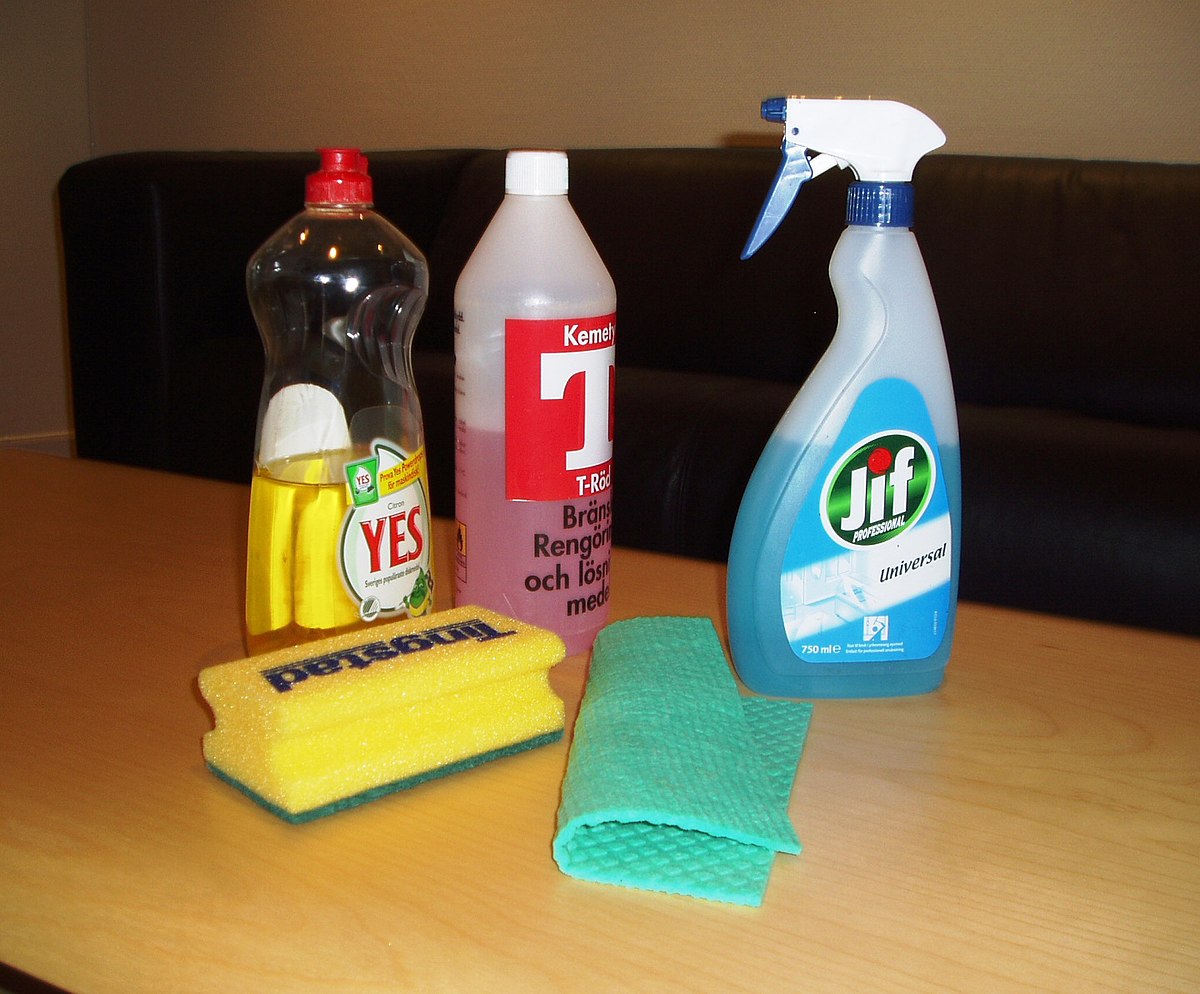
CHARACTERISTICS OF GOOD DETERGENT
www.wufasagronet.com
….. @WufasAgronet, we are Food Security (processing) Advocates.
✅Earned FAO, WFP, WORLD BANK, IFAD, IDA, IMF, UNSDGs, USAID, ROCKEFELLER FOUNDATIONS, BBC NEWS, JAGABAN ARMY, PUNCH NEWSPAPERS, GUARDIAN Newspapers, Today Reporters, Ripples News etc TopFan Barges.
✅Member NAAJ, PAAJ, IFAJ AND AFAN.
✅Consultancy Services in Human Capital and Value Chain Development in Food Processing technology.
DETERGENTS used for washing in industries should have the following characteristics.
-Ability to loosen organic matters eg. Soil etc. (organic dissolving power)
-Good rinsing power.
-Adequate wetting power to allow detergent to penetrate the deposit acting quickly and efficiently.
-Good sequestering power – removal of mineral deposits eg. Calcium, magnesium.
-Emulsifying power – fragmenting oil into tiny particles.
-Adequate germicidal power to sterilized dirty detergent solutions.
-Ability to dissolve alkali solutions precipitate of calcium and magnesium salt.
-It should not be corrosive.
-It should posses good buffering and saponifying powers.
The above characters may not be contained in a single detergent but if blended with others rich in some of the characters, a good result may be achieved.
MAJOR SOURCES OF DETERGENTS.
{Alkalis} – Caustic soda is the basic ingredient of detergent however,
there could be addition of other additives to give a property to the detergent. Other basic ingredients are Soda ash, Sodium silicate and others as seen above.
SEQUESTERING AGENT.
This is the action of polyphosphate in precipitation of calcium and magnesium salts in water creating additional wetting agent and polyphosphate to assist sequestration this would constitute most effective and economical clean-in-place detergent for brewing cleanings.
WETTING AGENT.
Known generally as synthetic detergent, Wetting agents are classified into 3 major types :An-ionic and Cat-ionic wetting agents.
The An-ionc type is commonly used for detergent formulation eg. Sulphated alcohols alkyl or aryl sulphonates. Non-ionic are mostly the polyethylonic oxide. On blending of both an ionic and catonic the result may be excessive foaming. It also processes good wetting, dispersing and rinsing power.
STERILISING AGENT.
Alkalis porcess sterilizing power, which increases with pH and temperature.
At WufasAgronet, we are competent and reliable Food Technologists into Human Capital and Value Chain Development Consultancy in Food Processing. Contact us email :wufasagronet@gmail.comPls go through the earlier sent documents.
Food Security
SEASONINGS. FLAVORS. FOOD INGREDIENTS.

✔Contact us @WufasAgronet for wide range of integrated flavors and seasonings, we are Manufacturers’ Representative.
…. @WufasAgronet we are Food Security (Processing) Advocates.
✅Earned FAO, WFP, WORLD BANK Group, UNSDGS, ROCKEFELLER FOUNDATIONS, BBC NEWS, JAGABAN ARMY, PUNCH NEWSPAPERS, GUARDIAN Newspapers, Today Reporters, Ripples News, etc TopFan Barges.
✅Member NAAJ, PAAJ, IFAJ & AFAN.
✅CONSULTANCY SERVICES IN HUMAN CAPITAL AND VALUE CHAIN DEVELOPMENT IN FOOD PROCESSING.
✔FLAVORS
BAKERY & PASTRY FLAVORS
*Vanilla flavor
*Condensed milk flavor
*Butter scotch flavor
*Enzyme chocolate flavor
*Enzyme butter flour
*Milk flavor
*Coconut flavor
✔ CONFECTIONERY & CANDY FLAVORS
*Strawberry flavor
*Chocolate flavor
*Orange flavor
*Butter vanilla flavor
*Banana flavor
*Mango flavor
*Lemon flavor
*Milk flavor
*Vanilla flavor
*Apple flavor
*Mixed berry flavor
*Coconut flavor
*Caramel flavor
*Honeydew flavor
*Condensed milk flavor
*Peanut flavor
*Cheese flavor
✔BEVERAGE FLAVORS
*Apple flavor
*Coconut flavor
*Caramel flavor
*Mango flavor
*Lemon flavor
*Banana flavor
*Pineapple Flavor
*Orange flavor *Strawberry flavor
*Natural Ginger flavor
*Malta flavor
*Grape flavor
*Raspberry flavor
✔ENCAPSULATED FLAVORS
*Strawberry flavor
*Raspberry flavor
*Mixed Berry flavor
*Orange flavor
*Apple flavor
*Banana flavor
✔BEVERAGES (CONCENTRATES, COMPOUNDS, BASES AND EMULSIONS) :
*Pineapple
*Lemon
*Ginger
*Cola
*Black currant
*Orange
*Strawberry
*Chapman
*Apple
*Banana
*Mixed fruit
*Cocopina
✔SAVOURY FLAVORS
*Beef flavor
*Chicken flavor
*Tomato flavor
*Cheese flavor
*Seafood flavor
*BBQ flavor
*Roasted flavor
*Smoked fish flavor
*Suya flavor
*Peanut flavor
*Roasted Chicken flavor
*Sardine flavor
*Smoke flavor
✔MILK POWDER :
*Fat filled milk powder
*Skimmed milk powder
*Full cream powder
*Flavored milk powder
*Butter milk powder
✔ICE-CREAM, YOGHURT & DAIRY FLAVORS :
*Yogurt flavor
*Vanilla flavor
*Strawberry flavor
*Banana flavor
*Mixed Berry flavor
*Chocolate flavor
*Cherry flavor
*Mango flavor
✔SEASONINGS:
FOOD SEASONINGS
*Beef seasoning
*Chicken seasoning
*Tomato seasoning
*Cheese seasoning
*BBQ Seasoning
*Seafood seasoning
*Noddles seasoning
*Pasta seasoning
*Jollof seasoning
✔SPICES :
*Cinnamon powder
*Onion powder
*Ginger powder
*Garlic powder
*Paprika powder
*Nutmeg powder
✔FOOD INGREDIENTS :
*Fat Replacer (Handisol – 25)
*Sweetener
✅OTHERS :
*Real meat reaction pastes
*Vegemeat for sausage roll
*Spice flavor oil
*Liquid and oil soluble flavor
*Soup and gravy mixes
*Ice cream premix
*BBQ sauce
*Tomato /Pizza sauce etc.
At WufasAgronet , we are competent and reliable Food Technologists into Human Capital and Value Chain Development Consultancy in Food Processing technology training the teeming youthful population including teirary institutions graduates in Global Competitiveness and International Best practices in Food Processing technology.
Contact email wufasagronet@gmail.com
Food Security
SECURITY PATHWAYS IN RELATION TO SUSTAINABLE FOOD SECURITY OF A NATION.
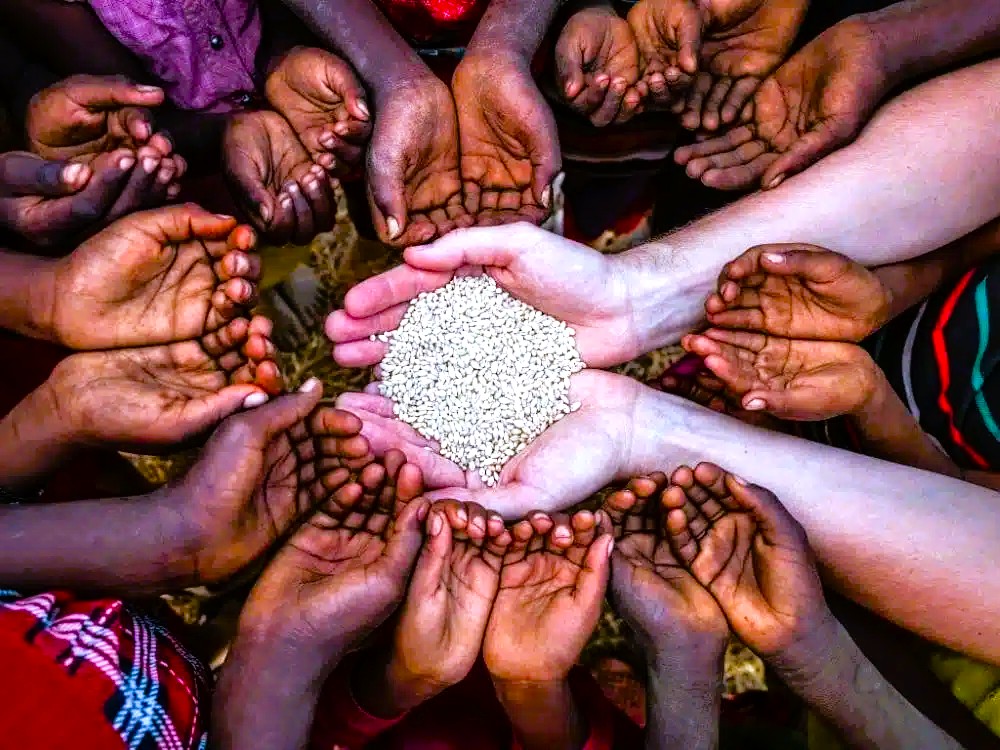
Good governance is predicated on ensuring the actualisation of the various security architecture of a Nation. The political barometer is also monitored through the efficiency of the security pathways which are :
INTERNAL SECURITY, INFORMATION/COMMUNICATION. , FOOD SECURITY, HEALTH ,EDUCATION, ELECTRICITY, TRANSPORTATION AND INDUSTRIAL GROWTH.
.
All the above are the essential security systems that can produce and provide QUALITY POPULATION through good and quality SUPERVISION
✅NATIONAL Security of life and properties is the (numero uno) number one responsibility of the Head of government be it President, Head of state and others. The mandate to secure life and property is paramount , they control and command the apparatus of security such as adequate Policing, effective Armed forces- Army for protection against external or internal aggression. Customs / Immigration for vigilant boarders patrol to prevent smuggling and immigration control amongst many others . Equipping them with weapons, Aircrafts, Vehicles, Boats etc.
For effective surveillance. In tackling the menace of bandits and kidnappers who have taken over the forest prohibiting farming activities . Armed Forest Guards / Rangers should be introduced.
INFORMATION/COMMUNICATION.
The entire world is in information age.
The constitution clearly stipulate that every person shall be entitled to freedom of expression, freedom to hold opinions and to receive as well as to impact ideas and information.
However, it is the opinion of this writer that freedom be guided with secured intent to prevent abuse that may result in conflicts and war through hateful and unguided utterances.
The most acceptable form of communication is such that promote humane, responsible and patriotic reportage upholding the concept of discipline and promoting values nationally and internationally.
A lot of opportunity mostly untapped abound for investment in Information and communication like Print, Electronic and ICT media.
For industrial growth, information through advertisement, publication and social media is vital for public awareness.
FOOD SECURITY
Whether one eat to live or live to eat is a matter of semantics the bottom – line is Food is the main sustainace of bodies and souls. The importance of food cannot be over emphasised . knowing this fact of life has made the developed world to appropriately plan for provision of quality food for their citizens. Provision of food is prioritize in their national agenda. It is on this note that the United Nation’s clarion call to others in the world to emulate the culture of Sustainable Food Security ensuring the Tripple A(s). of AVAILABILITY, ACCEPTABLITY and AFFORDABILITY. ( UN 2030 food security agenda) of good quality food for the underdeveloped countries who are import dependent on basic food items such as Rice, Sugar, Dairy , Beverages etc .
Presently, Nigeria is revolutionising agrioprenuerial activities, it’s hoped that the present policies on agriculture will not be Summersaulted. The Maputo declaration on allocation of minimum 10% of the country’s annual budget must go to agriculture. Food must be made a constitutional right for all. The authority must take time to support Micro and Small scale Agroprenuerails activities to adapt to climate change. Agroprenuerail activities is the surest way to lift hundreds of millions out of hunger, poverty, conflict and deaspiration.
HEALTH CARE
Health is wealth – Primary Health care delivery must be taken to the grassroot levels, while Rural Health care moblisation be made available and effective all must be well equipped with vaccines, drugs, consumables and other biologicals.
— Ensure maintenance of standard by private sector through effective monitoring.
— Tapping into Herbs Processing , local medical herbs be Researched into by National Institute of Pharmaceutical RnD. In Collaboration with Fed Mins. of Science and Technology.
— Integration of alternative medicine into health care.
— Health insurance scheme must be intensified on .
— Stemming of illegal importation of smuggled fake drugs and illegal drug manufacturing in the country.
EDUCATION
A Society, Community and Nation is as good as the percentage of her literary population. The various levels of education are Primary , Secondary and teriary education 6-3-3-4 .Education must attract appropriate budget at all time. Education is being administered by Public and Private participation at all levels. The special education must receive attention by provision of special equipment such as braille machine, audiometer etc.
ELECTRICITY
To the chagrin of the unsuspecting consumers and Contrary to claim of the generation companies that generation capacity has improved to 7000 MW , the actual has been fluctuating between 2500 -3500 MW.(April 2019)
The idea of mono grid must be jettison while the legislation be relaxed to accommodate Private participations in generation. While effort must be intensified on the Green Bond of #10.97bn raise in December 2018. for financing of SOLAR energy.
Industrial development is unachievable without steady supply of electricity. A green belt of
Industrial Parks on Green energy is recommended in all the States of federation.this will sustain industrial activities that will promote growth.
TRANSPORTATION
This sector is an indispensable catalyst for stimulating economic, social, political and strategic/defence development of a Nation. All the National Development plans must accord the transport sector very high priority. In the formulation of National Transport policy, there must be defined objectives such as economic efficiency and coordinated development plan.
All forms of transportation system are embraced in Nigeria. Motor ,Railway transportation, inland waterways, aviation terminal and handling facilities seaports, airports and riverports including other ancillary facilities.
The administration of Transportation is vested in both Fed. Ministry of Works and Housing (Fed. Highways – Interstate roads Construction and maintenance) and State Ministry of Works/Transport (interstate roads while LG is responsible for Urban and Rural roads Construction and maintenance.
Aviation Ministry for Civil Aviation, Airports Development Management and Metrological services.
Internationally, the railway system is more affordable and relatively saver the frequency in Nigeria must be upgraded not scanty show up as is now the case.
INDUSTRIAL GROWTH
The economic growth rate ( 2019) is 2.1% ,this development is not unconnected with the dismal performances of the various indices above. eg the manufacturing growth rate is presently less than 7% although the Fedreral government set a 10.6% goal in 2017.which was to be driven by SME. Productivity is the only stimulant for Industrial growth. Farming output is barely about 22% mostly subsistence. .about 55% of work force is absorbed by agriculture. The major farming communities in North East, Middle belt downwards to the southern section are being sacked either Boko Haram terrorist or Pasteuralist /Farmers conflicts and banditry.
The various activities as enumerated in this writeup are all depended on Food security system. FOOD SECURITY MUST BE IN THE FRONT BURNER TO ACHIEVE SUCCESS. IN OTHER SEGMENTS.
CONCLUSION
— FOOD Security issues must be in the front burner of government’s agenda. Since it encompasses all other activities.
— The effectiveness of other parasatal must be ensured through adequate supervision.
— TO PREVENT IMMINENT DANGER OF FAMINE. Forest Guards (armed) must be appropriately deployed to secure the large expanse of the forest for Farming activities.
— Indigenous Reserch and Development on local Technology be improved on.
— Electricity generation from Green Energy source should be encouraged in the Industrial parks.
— Food Security system must be made a CONSTITUTIONAL RIGHT for all the citizenry.
At WUFAS AGR0Net, we are Competent and Reliable Food Processing Technologists ,into Human Capital Development Consultancy. Centering on ETHICS of Food Processing Technology. Training on industrial food processing (General Manufacturing Principles ) to the teeming youthful population, startups and other Food handlers. We are seeking Collaboration and Strategic partnership with corporate bodies, NGOs and others
Interested in Food Security.
Contact: 08157784430, 08034064270.
Emails wufasagronet @gmail.com
-
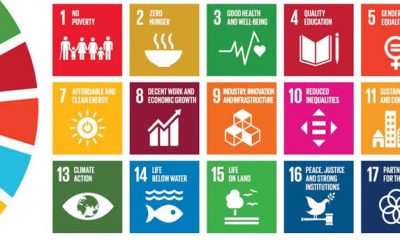
 Environmental3 years ago
Environmental3 years agoOPINION: AN ACCESSMENT OF NIGERIA’S PERFORMANCE IN THE OPTICS OF THE UN 17 SUSTAINABLE DEVELOPMENT GOALS AGENDA 2030. ( Periodic quaterly review & update — ( September ’22)
-
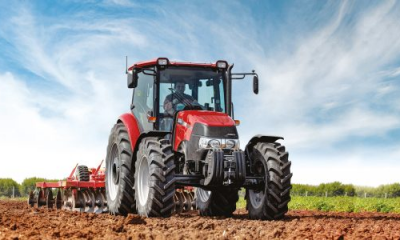
 Food Security3 years ago
Food Security3 years agoREALITIES OF LARGE SCALE INTEGRATED AGROPRENUERAIL FARMING AND FOOD PROCESSING BUSINESS IN NIGERIA. (Update)
-

 Food Security3 years ago
Food Security3 years agoTOP SEVEN AGRICULTURAL COMMODITIES WITH HUGE UNTAPPED POTENTIALs – update
-

 Food Security4 years ago
Food Security4 years agoMITIGATING THE MENACE OF CLIMATE CHANGE THROUGH GREENBOND ISSUANCE.
-
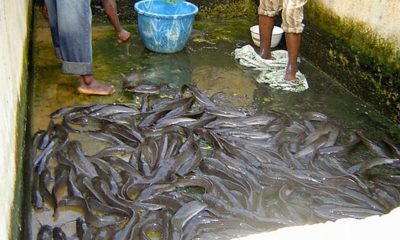
 Food Security3 years ago
Food Security3 years agoFISH PROCESSING TECHNOLOGY
-

 Food Security4 years ago
Food Security4 years agoTHE ROLE OF E -COMMERCE IN SYNERGISING AGRICULTURAL VALUE CHAIN DEVELOPMENT IN AFCTA IS SINE QUA-NON.
-

 Food Security3 years ago
Food Security3 years agoTHE IMPENDING GLOBAL FAMINE FROM THE PERSPECTIVES OF THE WORLD INSTITUTIONAL LEADERS.
-

 Food Security3 years ago
Food Security3 years agoMICROBIOLOGICAL AND CHEMICAL EVALUATION OF LOCALLY FERMENTED BEVERAGES — PITO & BURUKUTU




